1. World Health Organization. Global Tuberculosis Report 2022. Geneva, Switzerland: Word Health Organization;2022.
2. United Nations. The Sustainable Development Goals Report 2022. New York, NY, USA: United Nations;2022.
3. World Health Organization. Global Strategy and Targets for Tuberculosis Prevention, Care and Control After 2015 WHA65/2012/REC/3. Geneva, Switzerland: World Health Organization;2013.
4. World Health Organization. A Patient-Centered Approach to TB Care. WHO/CDS/TB/201813. Geneva, Switzerland: World Health Organization;2018.
5. World Health Organization. The End TB Strategy. WHO/HTM/TH/201519. Geneva, Switzerland: World Health Organization;2015.
6. Myburgh H, Baloyi D, Loveday M, Meehan SA, Osman M, Wademan D, et al. A scoping review of patient-centred tuberculosis care interventions: gaps and opportunities. PLOS Glob Public Health. 2023; 3(2):e0001357. PMID:
36963071.
7. Alipanah N, Jarlsberg L, Miller C, Linh NN, Falzon D, Jaramillo E, et al. Adherence interventions and outcomes of tuberculosis treatment: a systematic review and meta-analysis of trials and observational studies. PLoS Med. 2018; 15(7):e1002595. PMID:
29969463.
8. Korea Disease Control and Prevention Agency. Annual Report on the Notified Tuberculosis in Korea, 2022. Osong: Korea Disease Control and Prevention Agency;2022.
9. Kim JH, Yim JJ. Achievements in and challenges of tuberculosis control in South Korea. Emerg Infect Dis. 2015; 21(11):1913–1920. PMID:
26485188.
10. Kim J, Han J, Kwon Y, Choi H. Treatment outcomes among drug-susceptible patients with tuberculosis in the Republic of Korea, 2019 & 2020. Public Health Wkly Rep. 2023; 16(12):329–353.
11. Linh NN, Viney K, Gegia M, Falzon D, Glaziou P, Floyd K, et al. World Health Organization treatment outcome definitions for tuberculosis: 2021 update. Eur Respir J. 2021; 58(2):2100804. PMID:
34413124.
12. Lee H, Kim J, Park G, Choi H. Characteristics of notified tuberculosis cases & Republic of Korea, 2022. Public Health Wkly Rep. 2023; 16(28):931–949.
13. Yu S, Sohn H, Kim HY, Kim H, Oh KH, Kim HJ, et al. Evaluating the impact of the nationwide public-private mix (PPM) program for tuberculosis under National Health Insurance in South Korea: a difference in differences analysis. PLoS Med. 2021; 18(7):e1003717. PMID:
34260579.
14. Kim HJ, Bai GH, Kang MK, Kim SJ, Lee JK, Cho SI, et al. A public-private collaboration model for treatment intervention to improve outcomes in patients with tuberculosis in the private sector. Tuberc Respir Dis. 2009; 66(5):349–357.
15. Min J, Kim HW, Koo HK, Ko Y, Oh JY, Kim J, et al. Impact of COVID-19 pandemic on the national PPM tuberculosis control project in Korea: the Korean PPM monitoring database between July 2019 and June 2020. J Korean Med Sci. 2020; 35(43):e388. PMID:
33169559.
16. Oh AL, Makmor-Bakry M, Islahudin F, Wong IC. Prevalence and predictive factors of tuberculosis treatment interruption in the Asia region: a systematic review and meta-analysis. BMJ Glob Health. 2023; 8(1):e010592.
17. San Lin K. Loss to follow-up (LTFU) during tuberculosis treatment. Bacha U, Rozman U, Turk SŠ, editors. Healthcare Access-Regional Overviews. London, UK: IntechOpen;2019.
18. Sanchez-Padilla E, Marquer C, Kalon S, Qayyum S, Hayrapetyan A, Varaine F, et al. Reasons for defaulting from drug-resistant tuberculosis treatment in Armenia: a quantitative and qualitative study. Int J Tuberc Lung Dis. 2014; 18(2):160–167. PMID:
24429307.
19. Tekle B, Mariam DH, Ali A. Defaulting from DOTS and its determinants in three districts of Arsi Zone in Ethiopia. Int J Tuberc Lung Dis. 2002; 6(7):573–579. PMID:
12102295.
20. Gholami K, Kamali E, Hajiabdolbaghi M, Shalviri G. Evaluation of anti-tuberculosis induced adverse reactions in hospitalized patients. Pharm Pract (Granada). 2006; 4(3):134–138. PMID:
25214900.
21. Kim HW, Min J, Shin AY, Koo HK, Lim SY, Park MJ, et al. Reasons why patients with tuberculosis in South Korea stop anti-TB treatment: a cross-sectional study. Int J Tuberc Lung Dis. 2020; 24(10):1016–1023. PMID:
33126933.
22. Kim HW, Park S, Min J, Sun J, Shin AY, Ha JH, et al. Hidden loss to follow-up among tuberculosis patients managed by public-private mix institutions in South Korea. Sci Rep. 2022; 12(1):12362. PMID:
35859107.
23. Kim AM, Cho S, Kim HJ, Jung H, Jo MW, Lee JY, et al. Primary care patients’ preference for hospitals over clinics in Korea. Int J Environ Res Public Health. 2018; 15(6):1119. PMID:
29848995.
24. Karo B, Hauer B, Hollo V, van der Werf MJ, Fiebig L, Haas W. Tuberculosis treatment outcome in the European Union and European Economic Area: an analysis of surveillance data from 2002-2011. Euro Surveill. 2015; 20(49):
25. Caraux-Paz P, Diamantis S, de Wazières B, Gallien S. Tuberculosis in the Elderly. J Clin Med. 2021; 10(24):5888. PMID:
34945187.
26. Hase I, Toren KG, Hirano H, Sakurai K, Horne DJ, Saito T, et al. Pulmonary tuberculosis in older adults: increased mortality related to tuberculosis within two months of treatment initiation. Drugs Aging. 2021; 38(9):807–815. PMID:
34224105.
27. Rajagopalan S. Tuberculosis and aging: a global health problem. Clin Infect Dis. 2001; 33(7):1034–1039. PMID:
11528577.
28. Mok J, An D, Kim S, Lee M, Kim C, Son H. Treatment outcomes and factors affecting treatment outcomes of new patients with tuberculosis in Busan, South Korea: a retrospective study of a citywide registry, 2014-2015. BMC Infect Dis. 2018; 18(1):655. PMID:
30545315.
29. Mkopi A, Range N, Lwilla F, Egwaga S, Schulze A, Geubbels E, et al. Adherence to tuberculosis therapy among patients receiving home-based directly observed treatment: evidence from the United Republic of Tanzania. PLoS One. 2012; 7(12):e51828. PMID:
23284782.
30. Jesus GS, Pescarini JM, Silva AF, Torrens A, Carvalho WM, Junior EP, et al. The effect of primary health care on tuberculosis in a nationwide cohort of 7·3 million Brazilian people: a quasi-experimental study. Lancet Glob Health. 2022; 10(3):e390–e397. PMID:
35085514.
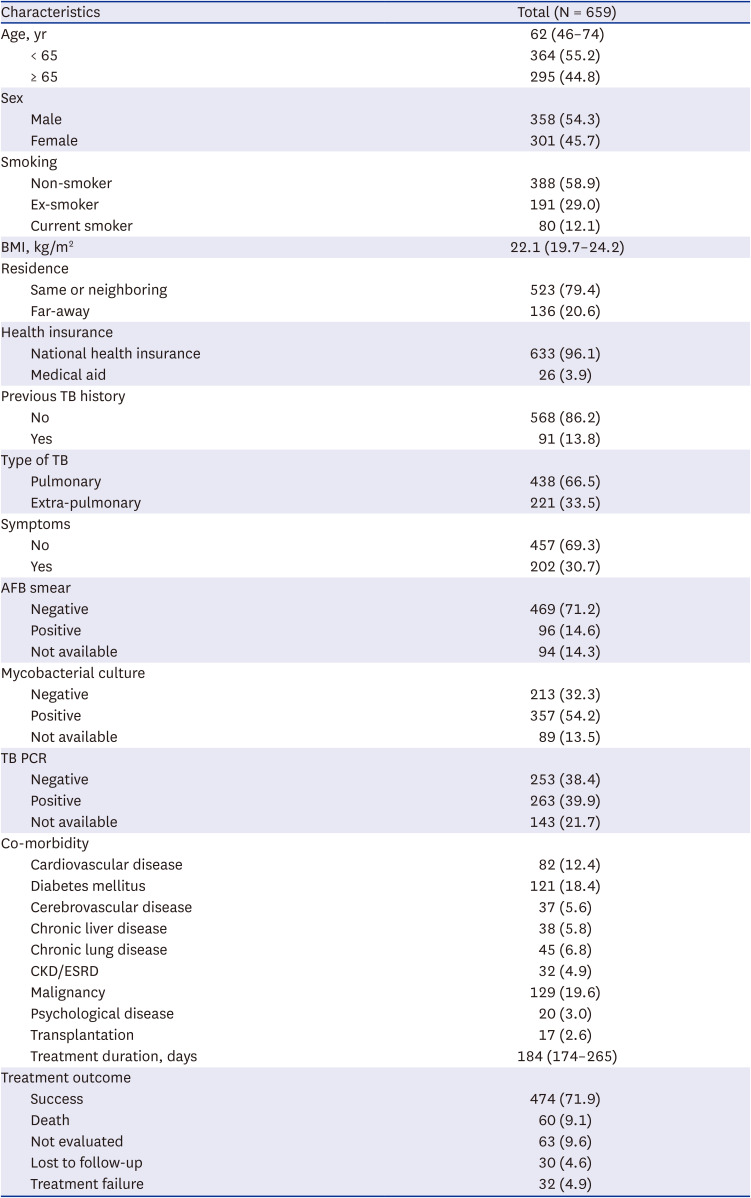
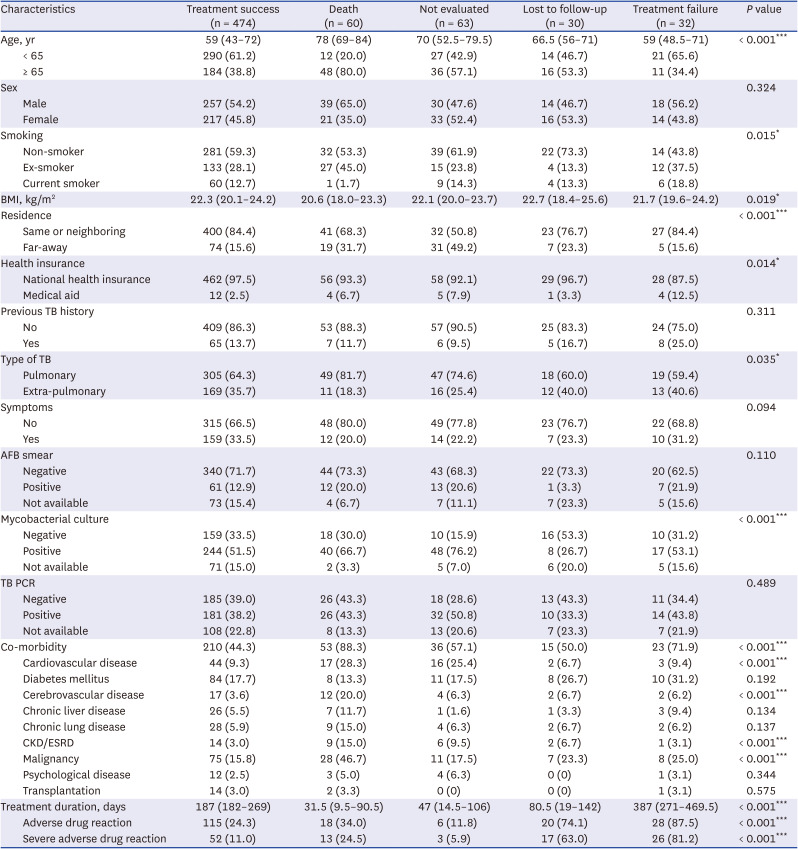

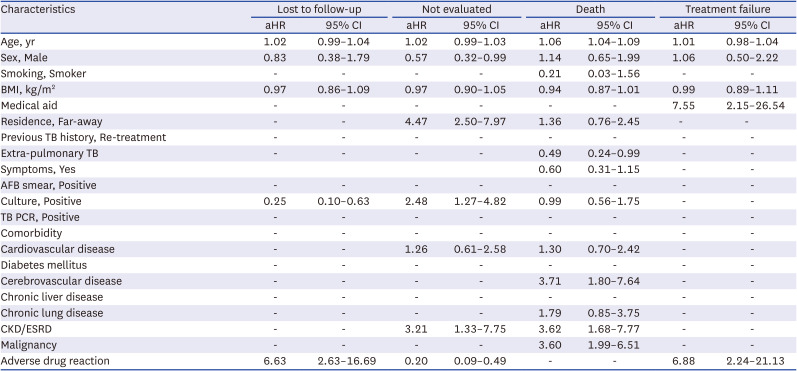




 PDF
PDF Citation
Citation Print
Print



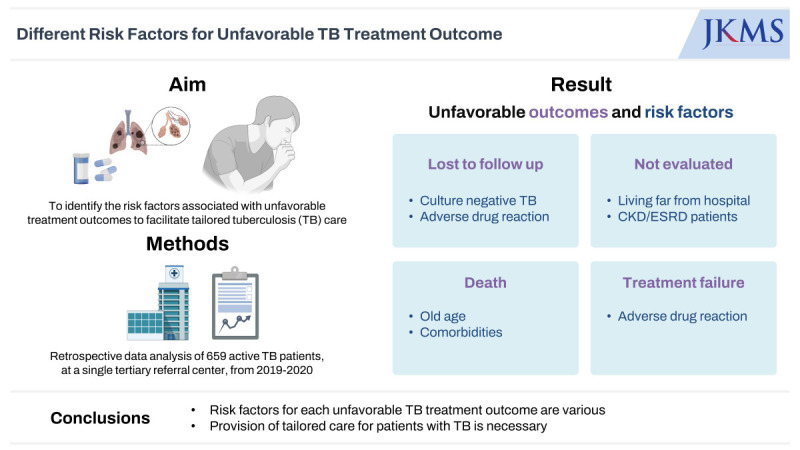
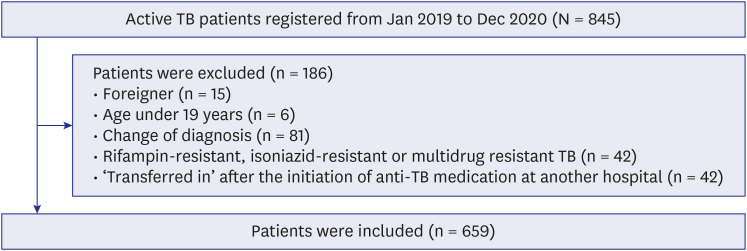
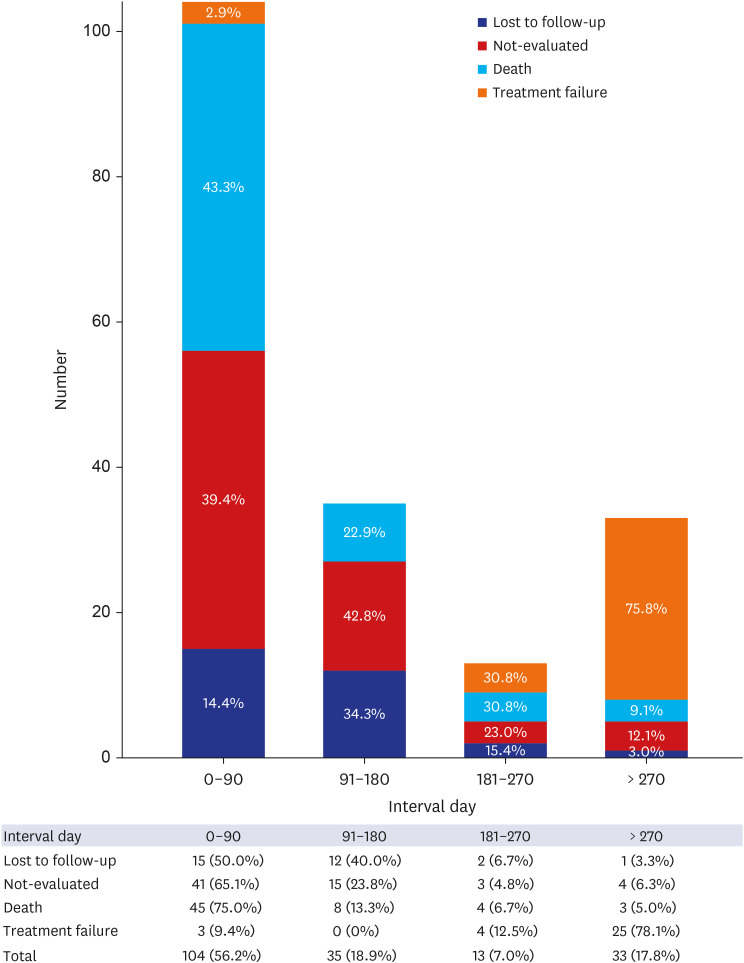
 XML Download
XML Download